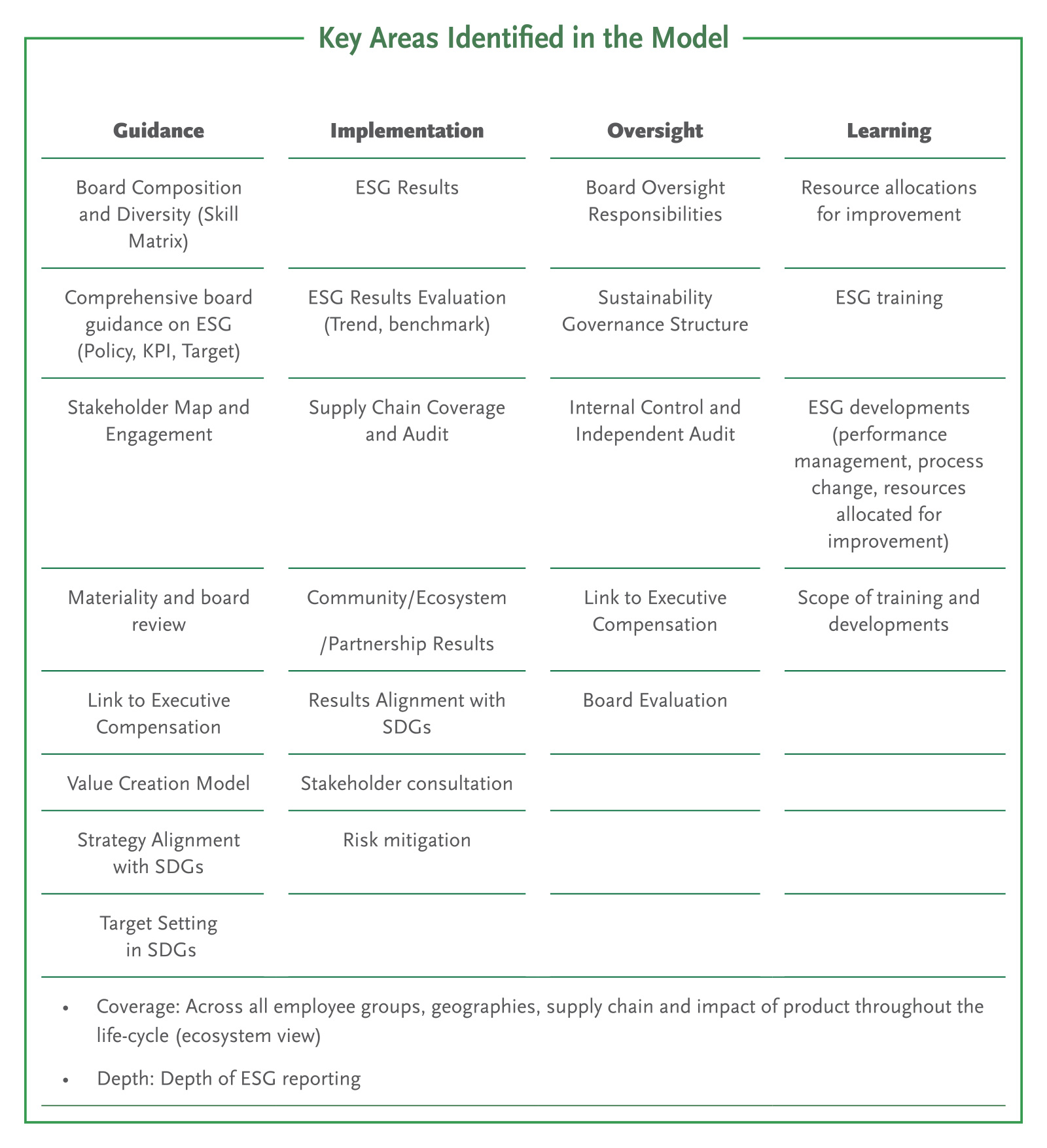Methodology
The Sustainability Governance Scorecard© is an impact-research designed to help improve the state of the world by accelerating learning from peers through benchmarking and sharing best practice examples in sustainability reporting. It is developed as a governance improvement tool for companies to improve their sustainability performance and reporting.
The SG Scorecard does not aim to measure the sustainability performance of companies but seeks the presence of an environment and a climate of sustainability governance where sustainability efforts can flourish. In line with this perspective, SGS is distinguished by sharing best-in-class examples of various sustainability governance steps which fosters the learning pace among peers.
The research is expected to provide an opportunity for benchmarking and serve as a guideline for creating effective sustainability governance mechanisms, learning from peers, and thereby contributing to deployment of good practices on sustainability.
SAMPLING
The research mainly focuses on quality of decision making and governance of sustainability issues. The scope encompasses 200 different companies from 10 industries in 7 countries. The companies are trading at key sustainability stock exchanges which are signatories of Sustainable Stock Exchanges Initiative. The companies which have an asset size of 1 Billion Dollars or higher are selected and diversified by different initiatives and reporting schemes. Selected 10 industries are comparable across countries. Financial and technology companies are not selected since to their regulatory standards may vary by country.
EVALUATION CRITERIA
The SG Scorecard© identifies and utilizes 422 measurable indicators for sustainability governance. The criteria are either met or not met (0/1). The criteria are defined to assess the governance quality of companies’ sustainability efforts under four main areas: Board Guidance, Implementation & Performance, Board Oversight, Learning & Development. Each of these areas are assessed through objective criteria, designed through a lens of governance.

Evaluation Criteria are categorized either as Breadth or Depth. Breadth criteria cover requirements for good governance in sustainability and answer the question ‘What?’. They are intended to provide an assessment of the maturity of the company’s approach to sustainability governance. Best- in-class companies have the majority of breadth criteria satisfied.
Depth criteria provide further granularity to the questions and are intended to provide an evaluation into whether the company has internalized its approach to sustainability. These questions either provide an answer to the question ‘How’ and show methods of implementation or provide a breakdown of material topics the company focuses on within those criteria. As the sustainability priorities for each company will differ, the fulfillment of depth criteria will show larger variance between companies.
The evaluation method is based on identifying the best-practice companies in terms of sustainability governance. Evaluation consists of adding the breadth score of the company (1 point for each yes) and dividing the sample of 200 companies into 5 Tier Groups. Depth scores are used to move companies between TIERS if the depth score is more than 1 or 2 STD than the Tier average, to account for stronger internalization of one or more areas of assessment in a company.
The scorecard is evaluated based on the combination of breadth and depth score and shared by 5 tiers to provide better granularity in order to identify good examples. Companies in each tier are shown alphabetically.
DATA COLLECTION
The analysis is limited only to the publicly available data as disclosed in Annual Reports, Integrated Reports, Sustainability Reports as well as the Governance and Sustainability sections of the company’s website.
To ensure alignment between researchers, the first 5 assessments are completed by all researchers to assess differences in applying the research criteria. Furthermore, regular meetings are held to ensure alignment between researchers. Like-for-like analysis is conducted for each category to course-correct throughout the research.
After the data collection process is finalized, the research results are made publicly available and shared with respective companies’ Investment Relations Departments to provide the opportunity for review. All previous years’ research results are publicly available online on our website.
METHODOLOGY IMPROVEMENTS IN 2022
Sustainability reporting is an evolving field, improving every year as more companies adopt good practices and increase transparency regarding their sustainability performance. As such, we as well re-evaluate our methodology and criteria set to reflect these developments each year.
In SGS 2022, we have sharpened our data collection approach in various areas and increased the granularity of results we seek.
- Value Creation Model: Visualized and can be viewed in a single page
- Materiality: Only topics listed under the materiality section or within a matrix are considered to be material for the company
- Committees: Only committees specifically serving Sustainability or are considered
- Company targets: Time-bound, numerical, provided in a chart format
- Ecosystem targets: Time-bound, numerical, provided in a chart format
Given these changes, some results disclosed in SGS 2022 are not comparable to previous years and some companies have changed TIERS because of this. In such cases, we have not included the comparison of results over the years but only the data for this year.
At the same time, we intend to introduce an innovation to the report each year – this year, we identified best-in-class companies for 7 key priority areas, which can be found in the respective chapters throughout the report.
